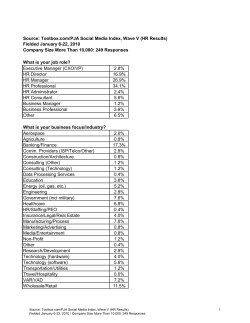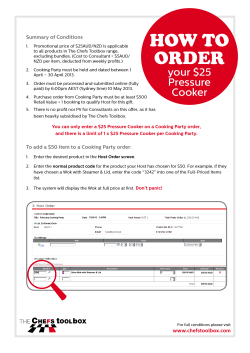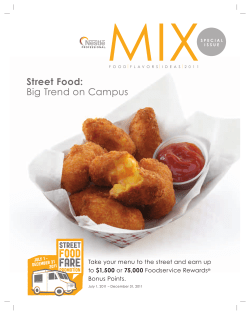
Kingfisher RTUs — How to create multiple variables using Toolbox PLUS+
Kingfisher RTUs — How to create multiple variables using Toolbox PLUS+ by Vishal Prakash TECHNICAL BRIEF Did you know that, when using Toolbox PLUS+ with Kingfisher RTUs, it is very simple to create multiple variables of different types, for different protocols, and to duplicate entire configurations? So, how is this done? As to whether it is simple, I will allow you, the user, to decide! The Kingfisher CP-30 and G-30 based RTUs include support for all six programming languages under the IEC61131-3 standard via the ISaGRAF programming environment and support for a multitude of protocols including Modbus, DNP3, SNMP, Kingfisher, DF1, and NTP, to name a few. Given this level of superior functionality, it is important for the user to be able to program the RTUs on a simple and efficient manner. It is assumed that the user has a basic understanding of Kingfisher concepts, industrial protocols, and the configuration software, Toolbox PLUS+. First, let’s look at how easy it is to create multiple variables. Take two of the most common industrial protocols, Modbus and DNP3, each have several different types of objects — Holding Registers, Discrete, Coils, Binary Inputs, and Analog Inputs etc. To create multiple objects of any type for either protocol, follow the steps listed below. 1. Open Toolbox PLUS+ 2. Create a project 3. Create a RTU as desired 4. Right Click on the RTU name and go to properties, add the desired communication protocols (see Figure 1) Figure 1: Enabling protocols in a CP-30 or G-30 RTU www.servelec-semaphore.com TECHNICAL BRIEF 5. Configure the communication ports and link the desired protocol to the port 6. Go to the “Dictionary” on the bottom left hand corner. Click on “New” in the workspace. A window will appear. Click on the “Multiple” tab (see Figure 2) Figure 2: Creating multiple protocol variables of different types 7. Now, simply select the Format (protocol), Type, and Range. As these parameters are being configured, the “Description” changes dynamically informing the user what type of variables will be created. 8. Once all parameters have been configured, click on OK 9. That’s it! For the result, see Figure 3 below. Figure 3: Creating the alarm condition to send the report to the SD Card www.servelec-semaphore.com TECHNICAL BRIEF The user can now edit each variable, export to Excel®, make changes, import back into Toolbox PLUS+, or make changes within the ISaGRAF interface. Next, it is very simple to replicate an entire RTU configuration! To do this, create the Project and RTU. Populate as required with the right I/O and communication modules, variables, protocols and ISaGRAF programs (see Figure 4). Figure 4: A fully configured RTU displaying list of ISaGRAF programs To replicate this RTU, in full, simply select the RTU; press Ctrl+C on the keyboard, click anywhere in the project tree space and press Ctrl+V on the key board! The same can be achieved by right-clicking on the RTU name, select “Copy” and then right-click on the Project Name and select “Paste”. That’s it! See the result below (Figure 5). www.servelec-semaphore.com U.S.A. Semaphore Americas Inc. 280 Wekiva Springs Road Suite 3030 Longwood, FL 32779 U.S.A. P +1 (844) 475 8020 support.americas@servelec-semaphore.com Australia Semaphore Unit 8, 3-5 Gilda Crt Mulgrave, Victoria 3170 Australia P+61 (03) 8544 8544 F +61 (03) 8544 8555 Info.kingfisher@servelec-semaphore.com Europe Semaphore Belgium Waterloo Office Park — Building “M” Dreve Richelle, 161 B-1410 Waterloo Belgium P+32 (2) 387 42 59 F +32 (2) 387 42 75 info.tbox@servelec-semaphore.com © 2013 Semaphore. All rights reserved. Kingfisher is a trademark of Semaphore. All other marks may be trademarks of their respective owners. 1361011 03/14 Figure 5: Duplicating entire configurations — in a single copy and paste action! You will notice that the RTU address is automatically appended. This is because every RTU on a connected telemetry network must have a unique address. RTU configurations can be copied across projects or groups. For more information on the above, please refer to the online help in Toolbox PLUS+. Please visit our website, www.servelec-semaphore.com/mykingfisher (must be a registered user) for the latest versions of the Kingfisher manuals and Toolbox PLUS+ programming software. The portal also contains other useful information such as example programs and firmware updates.
© Copyright 2025





















